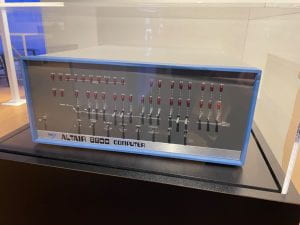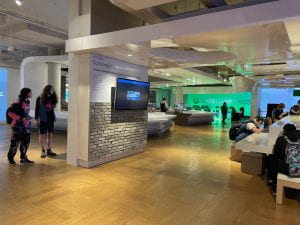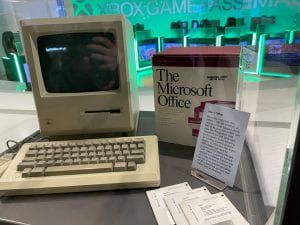“Who are you going to be?” -Michelle Obama
The question I wrote above was what we centred our entire project on. Who do I want to be? What do I want to do? Where do I see myself in 10 years? These questions I encountered throughout the project made me curious about what my future holds for me.
What type of person do I want to be?
I read a book named “The Ordinary Man”, which was about a hotel manager in the Rwandan genocide in 1993. His name was Paul Rusesabagina, and he managed the two premium hotels when the Rwandan genocide started. He saved a thousand people, both civilians and tourists, with absolutely no weapons in his possession.
Though he had no gun or physical weapon, he had something more substantial which had allowed him to stay alive throughout the Civil War: his words.
Generals, lieutenants, and officers had all visited him during the war with words that threatened him and his family, which would generally make any average man flee or go into hiding. However, he stood his ground and always repelled them without any physical harm.
Book notes:
https://dodos-win-hw2.craft.me/eEyyrW6WYpb0VQ
How was he able to do this?
He had connections that stretched to multiple government officials, from people working at the parliament in the UK to people from the White House. He also knew multiple local Rwandan government workers who had much influence in the army. He gave them favours, always treating them with the utmost respect and ensuring they had gifts worth thousands of dollars.
When high-ranking officers visited the hotel, he could manipulate them into not attacking the hotel by giving them multiple bottles of wine and treating them with care, even after the atrocities they had previously committed. Though he faced fear, he was able to exploit their weaknesses and turn them into friendly people.
“If you stay friendly with monsters you can find cracks in their armor to exploit. Shut them out and they can kill you without a second thought. I reminded myself of this over and over.”
“I have since thought a great deal about how people are able to maintain two attitudes in their minds at once. Take the colonel: He had come fresh from a world of machetes, road gangs, and random death and yet was able to have a civilized conversation with a hotel manager over a glass of beer and let himself be talked out of committing another murder. He had a soft side and a hard side and neither was in absolute control of his actions. It would have been dangerous to assume that he was this way or that way at any given point in the day. It was like those Nazi concentration camp guards who could come home from a day manning the gas chambers and be able to play games with their children, put a Bach record on the turntable, and make love to their wives before getting up to kill to more innocents. And this was not the exception—this was the rule. The cousin of brutality is a terrifying normalcy. So I tried never to see these men in terms of black or white. I saw them instead in degrees of soft and hard. It was the soft that I was trying to locate inside them; once I could get my fingers into it, the advantage was mine. If sitting down with abhorrent people and treating them as friends is what it took to get through to that soft place, then I was more than happy to pour the Scotch.”
– Paul Rusesabagina
He also called in multiple of his previous friends to support him in his time of need. With his connections in Rwanda, he could buy protection and guards to stand at the front of the hotel.
These factors helped him survive throughout the genocide.
What have I learnt from this process?
The first thing that stuck out to me was the power of words. Words are one of the most fundamental things a human can learn. We learn it in school and use it every day. However, most people cannot effectively communicate their points, which could result in less credibility. Though the content of your words is essential, I think the delivery of what you are trying to say is just as important. If you could perfect this weapon, you would be able to command and manipulate the people around you however you want.
The next major lesson I learned was the influence of your parents and the people around you.
The friends around you also greatly influence the type of person you grow up to be. If you grew up in a rougher environment with people harming others, you would highly likely grow up to be the same way due to you thinking it is normal. These factors caused lots of young teenage Rwandans to join gangs and harm others due to peer pressure. It became normalized to kill other human beings like it was part of a job that they had to do. If everyone else in the gang is doing it, what’s wrong if I do it?
Parents are your life’s most significant role models; they bathed, fed, and kept you warm. When you grow up, you indirectly become a mirror of them, most of your ideals and hobbies coming from them.m
Who are my role models?
As mentioned previously, parents are your most outstanding role models and inspirations. They help form the basis of your childhood and mostly turn you into who you are today. I also look up to seniors and my older sibling, who have guided me throughout my academic semester.
To help me understand who my role models are, I interviewed two people who have significantly impacted my development as a person. First, I interviewed my father, then my good friend and senior, Jonathon.
Interview Notes:
https://dodos-win-hw2.craft.me/fckZ74flOcwTn8
My role models
My father, a man named David, grew up in a small, humid, and tropical country in South East Asia. He grew up relatively poor but slowly worked his way up and eventually started his business that specialized in high-end furniture. Like me, his most incredible role model was his father, who began his very own printing business when he was growing up. They both had to face many hardships and persevere through them. I learned a lot throughout the interview, and I will try to implement what he said.

He mentioned about how adversity is a common thing you will have to face while growing up. Everyone faces it, it is part of growing up, and helps make you learn on past experiences. The worst thing you can do while facing hardship, is to give up.
Jonathon, a senior in PLP, and a friend of mine, moved from Taiwan at the age of 13. Although his English was not the best at first, he was able to endure and become one of the top students at the school I currently attend. He has been accepted to multiple universities across the world for computer science and will be continuing his journey in the US.

Perseverance, a key element in achieving goals, is not the only trait you can have when trying to achieve success. Leadership, communication, collaboration, are all key elements to achieving what you want in your life.
What are some common themes between both interviews?
Being a good person is a very important trait when trying to be a successful person. It boosts self esteem, and makes other people like you.
How does all of this information tie together?
Like the main character in the book, I look up to my father, for he is a man that I have learnt a lot from. He has made me into a better person, and made sure that I learnt from my mistakes if I ever do anything wrong.
We watched a Ted Talk, and one of the main things that I learnt when watching it, is the ability to move on. Mood usually depends on the place, time and people you are with, however, if you can look forward and not pay attention to the past, your life will be a lot more happier. Looking forward to the future and knowing it will get better is something that everyone can use. My father continued to persevere through hard times during his business and looked forward to a brighter future for himself and his family. Paul, from the hotel, continued to move forward, despite the despair he had in his mind of losing most of his friends and family. He knew, if he didn’t move forward he would there would be a chance for his children and his wife not to survive.
Though reflecting on the past is important, if you are to stuck up on something that you did or missed out on, then you will never be able to move on. You will be stuck with regret and will always remind yourself what could have been. The best thing you can do for yourself when going through hardship is to look forward to a better future and see what it holds for you.
So then who am I going to be?
I hope to be someone that enjoys life, and only see things for its good. I want to be joyful, and be positive around the people that matter most to me.
I want to persevere through hardships, but want to also excel in other aspects. Leadership and communication are things that I need to work on currently. Overall, I think that I am on track to become the person who I want to be.
Thanks,
Christian































